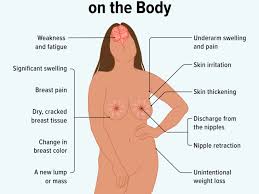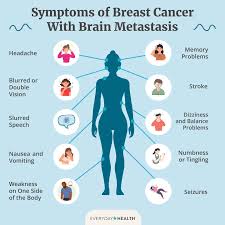Headaches in Women with Breast Cancer
Headaches in Women with Breast Cancer: Full Guide to Causes, Diagnosis, and Treatment
- Understanding Headaches in Women with Breast Cancer
- How Breast Cancer and Its Treatments Can Lead to Headaches
- Prevalence of Headaches in Breast Cancer Patients
- Clinical Patterns and Observations Based on Stage and Tumor Site
- What Triggers These Headaches During Cancer or Therapy
- Warning Signs That Require Immediate Medical Attention
- How Doctors Diagnose the Cause of Headaches
- Treatment and Relief Options for Breast Cancer-Related Headaches
- Can Headaches Be Prevented in Breast Cancer Patients?
- Will the Headache Go Away—Or Persist Long-Term?
- What Oncologists Say About Headaches in Breast Cancer
- 15+ Frequently Asked Questions (FAQ)
Understanding Headaches in Women with Breast Cancer

Headaches in women undergoing treatment for breast cancer can be more than just a side effect—they may signal deeper underlying processes connected to the cancer itself or its treatment. These headaches can range from mild and episodic to severe and persistent, potentially disrupting quality of life.
In some cases, the headache resembles a tension-type pain with pressure around the temples or back of the head. In others, it’s more throbbing or migraine-like, with associated nausea, visual disturbances, or sensitivity to light. It’s important to note that not every headache in a breast cancer patient is cancer-related, but the context always warrants thorough evaluation.
This phenomenon can arise due to direct or indirect involvement of the cancer with neurological pathways, complications from treatments such as chemotherapy or hormonal therapy, or due to secondary causes like infections, anemia, or stress. For some women, the pain may feel dull and diffuse, while others describe sharp or stabbing sensations. Understanding these nuances helps guide both diagnosis and appropriate relief.
How Breast Cancer and Its Treatments Can Lead to Headaches
The mechanism behind headaches in breast cancer patients can be multifactorial. One important factor is the possibility of metastatic spread—especially if breast cancer cells have traveled to the brain. While not all headaches signify brain metastases, any new or worsening headache should be taken seriously, especially in later stages of cancer.
Another factor is treatment-induced changes in the body. Chemotherapy, immunotherapy, and hormonal agents (like tamoxifen or aromatase inhibitors) can alter vascular tone, fluid balance, or neurological function, which may trigger headache episodes. For instance, dehydration from vomiting or diarrhea caused by treatment can lead to tension headaches. Similarly, steroid withdrawal or the use of drugs that alter estrogen levels may provoke migraines in susceptible individuals.
In addition, stress and anxiety—common among cancer patients—can result in tension-type headaches due to prolonged muscle contraction and hormonal imbalance. Some women also experience secondary headaches from anemia, infections, high blood pressure, or medication side effects like corticosteroids or opioids.
Prevalence of Headaches in Breast Cancer Patients
Headaches are relatively common among women with breast cancer, though their causes vary widely. According to clinical studies, up to 30–45% of breast cancer patients report experiencing recurrent headaches during the course of their diagnosis or treatment. However, only a small percentage of these are directly related to cancer metastasis.
Headaches tend to occur more frequently in patients with advanced-stage breast cancer, particularly stage III or IV, and those receiving aggressive multi-drug regimens. Postmenopausal women on aromatase inhibitors may also be at increased risk due to hormonal shifts and bone-related complications that can cause referred pain.
One large observational study noted that in patients with known metastatic disease, around 10–16% developed secondary headaches due to brain metastases or leptomeningeal spread. In contrast, early-stage breast cancer patients most commonly experience treatment-related or psychosomatic headaches, especially in the initial months after diagnosis.
Clinical Patterns and Observations Based on Stage and Tumor Site

The likelihood and nature of headaches often correlate with the stage and specific biology of the breast cancer. For example, triple-negative and HER2-positive subtypes are more aggressive and have a higher risk of central nervous system (CNS) involvement, including brain metastasis, which can lead to persistent or worsening headaches. These headaches may be accompanied by neurological signs like vision changes, weakness, or seizures.
In stage I or II breast cancer, most reported headaches are mild and transient—typically linked to treatment side effects, stress, or musculoskeletal tension from anxiety and altered posture during recovery. These are usually not alarming but can impact daily comfort.
In stage III or IV disease, particularly with confirmed metastases, the risk of intracranial pressure elevation becomes a real concern. Headaches in such cases are often early morning, progressive, and not relieved by common analgesics. These are red flags that prompt urgent neurological assessment.
What Triggers These Headaches During Cancer or Therapy
Headaches in breast cancer patients can stem from multiple causes—some directly oncologic, others iatrogenic or systemic. Understanding the full range of triggers helps to differentiate benign discomfort from signs of serious complications.
From an oncologic perspective, metastasis to the brain is one of the most concerning causes. Tumor growth can elevate intracranial pressure or irritate pain-sensitive structures such as the meninges or blood vessels. Similarly, leptomeningeal carcinomatosis—where cancer cells spread to the membranes around the brain—can also cause persistent or diffuse headaches.
Medications are another major contributor. Chemotherapeutic agents like cisplatin or methotrexate can cause neurotoxicity or affect cerebrospinal fluid dynamics. Hormonal therapies such as tamoxifen or letrozole may provoke migraine-like headaches due to abrupt changes in estrogen levels. Steroid use and withdrawal can both induce headaches, depending on dosage and tapering speed.
Other contributing factors include anemia, especially if hemoglobin levels fall significantly during treatment. Low oxygen delivery to the brain can cause chronic dull headaches. Dehydration, electrolyte imbalances (e.g., hyponatremia), and infections (meningitis, sinusitis) are also common culprits in immunocompromised patients. Additionally, psychosocial stress, sleep disruption, and tension can initiate or exacerbate tension-type or cluster headaches.
Warning Signs That Require Immediate Medical Attention
While some headaches in breast cancer patients are relatively harmless, others demand urgent medical evaluation. Recognizing red flags can lead to timely intervention and improve outcomes.
A sudden, severe headache—often described as the “worst headache of my life”—may indicate subarachnoid hemorrhage or acute intracranial event and requires immediate imaging. Progressive headaches that worsen over days or weeks, especially those that become unresponsive to pain medications, may suggest tumor progression or increased intracranial pressure.
Neurological symptoms accompanying headaches—such as visual disturbances, nausea, vomiting (especially early morning), confusion, speech difficulties, or weakness on one side of the body—are strong indicators of potential brain involvement. These warrant an MRI or CT scan without delay.
Persistent headaches that change character, location, or frequency should also be taken seriously. For example, a new daily headache in a woman with known metastatic breast cancer raises concern for CNS spread. Headaches that wake the patient at night or prevent sleep are also considered concerning.
Finally, if a headache is accompanied by fever, stiff neck, or sensitivity to light, it may signal meningitis or another serious infection, especially in patients undergoing immunosuppressive therapy.
How Doctors Diagnose the Cause of Headaches
Diagnosing the source of headaches in women with breast cancer involves a combination of clinical evaluation, imaging, and laboratory testing. The process begins with a detailed medical history and symptom profile: onset, duration, intensity, associated signs, and response to medications.
Neurological examination helps identify any deficits that may suggest CNS involvement. If cancer metastasis is suspected, contrast-enhanced MRI of the brain is the gold standard for evaluating potential lesions, edema, or leptomeningeal disease. CT scans are also useful for identifying masses or hydrocephalus but may miss smaller abnormalities.
If infection or inflammation is suspected, a lumbar puncture may be performed to assess cerebrospinal fluid for malignant cells, bacteria, or elevated pressure. Blood tests are used to check for anemia, electrolyte disturbances, or signs of systemic infection.
In some cases, ophthalmologic evaluation (including fundoscopy) is conducted to assess for papilledema—swelling of the optic nerve that can indicate raised intracranial pressure. Electroencephalography (EEG) may be used if seizures or altered mental status are present.
The diagnosis must also rule out non-cancer causes of headache like migraines, tension headaches, sinusitis, or medication overuse. This holistic diagnostic approach ensures that treatment targets the root cause rather than just the symptom.
Treatment and Relief Options for Breast Cancer-Related Headaches
Managing headaches in breast cancer patients depends heavily on identifying the underlying cause. When the cause is benign—such as stress or tension—simple lifestyle modifications and non-opioid pain relievers may be sufficient. However, cancer-related or treatment-induced headaches often require a more comprehensive approach.
For metastatic brain lesions, corticosteroids like dexamethasone can reduce intracranial pressure and alleviate pain. In some cases, whole-brain radiation therapy or stereotactic radiosurgery (e.g., Gamma Knife) may be considered to target specific lesions and reduce headache-inducing mass effect.
If hormonal therapy is the culprit, adjusting the dosage or switching medications may reduce migraine frequency. Neurologists may recommend prophylactic medications like beta-blockers, tricyclic antidepressants, or anticonvulsants for recurrent migraine-type headaches.
For anemia-induced headaches, iron supplements or erythropoietin-stimulating agents may help improve hemoglobin levels. In cases involving dehydration or electrolyte imbalance, intravenous fluids and rehydration therapy are typically effective.
Supportive therapies like physical therapy, acupuncture, stress-reduction techniques, and counseling can also be beneficial, especially for tension-related headaches. In complex cases, multidisciplinary care involving oncologists, neurologists, and pain specialists ensures a tailored and responsive treatment strategy.
Can Headaches Be Prevented in Breast Cancer Patients?
Preventing headaches in women undergoing treatment for breast cancer involves both proactive care and individualized adjustments to treatment regimens. While not all headaches are avoidable—especially those linked to metastases—many treatment-related or lifestyle-induced headaches can be minimized.
First, hydration and electrolyte balance are crucial. Ensuring sufficient fluid intake during chemotherapy, especially when nausea, vomiting, or diarrhea is present, helps prevent dehydration-related headaches. Maintaining stable blood sugar levels and addressing anemia early also supports neurological health.
Medication planning plays a big role in prevention. For patients with a known history of migraines, oncologists may preemptively adjust treatment plans or prescribe prophylactic agents. Hormonal therapy regimens should be monitored closely, especially in premenopausal women, as hormonal fluctuations often trigger migraines. Adjustments in dose or timing, or switching to alternative agents, can sometimes reduce headache frequency.
Stress management is another essential preventive approach. Mindfulness techniques, breathing exercises, cognitive behavioral therapy, or supportive counseling help relieve tension, which is a major trigger for chronic headaches in cancer patients. Adequate sleep, balanced nutrition, and gentle physical activity (like yoga or walking) further enhance resilience to headache triggers.
Finally, regular neurological assessments for those at high risk of CNS involvement ensure that potential problems are identified early—before they escalate into severe or persistent headache patterns.
Will the Headache Go Away—Or Persist Long-Term?
Whether a headache resolves completely or becomes a long-term issue depends on its underlying cause and the patient’s response to treatment. In most cases, especially where headaches are related to reversible factors like medication side effects, dehydration, or emotional stress, the pain tends to resolve as those issues are addressed.
For example, tension-type headaches linked to stress or posture typically improve with relaxation techniques, counseling, or light physical therapy. Migraines triggered by hormonal changes may settle once a stable hormonal state is reached, or with proper pharmacological management.
However, if the headache is due to metastatic spread—particularly to the brain or leptomeninges—resolution may only occur with successful oncological treatment (such as radiation or surgery). Even then, some patients may continue to experience episodic discomfort due to residual inflammation, scarring, or altered cerebral dynamics.
In rare but serious cases, especially where neurological damage has occurred or where chronic intracranial pressure changes persist, the headaches may become a long-term condition requiring ongoing pain management.
In summary, some headaches fade away within days or weeks, while others persist throughout treatment. Few last a lifetime—but if they do, it’s usually because the underlying issue is also chronic or complex.
What Oncologists Say About Headaches in Breast Cancer

Practicing oncologists emphasize the importance of individualized evaluation whenever a breast cancer patient presents with headaches. From their clinical perspective, not all headaches are cause for alarm—but none should be dismissed without proper context.
According to Dr. Emily Harris, a breast oncology specialist, “New or worsening headaches in patients with known malignancy always warrant careful workup. We consider recent medication changes, hydration status, and history of migraines, but we also maintain a low threshold for imaging—especially in metastatic cases.”
Neuro-oncologist Dr. Rajesh Pillai adds, “Many headaches turn out to be benign—tension or dehydration—but once in a while, we catch brain metastasis early because the patient noticed a subtle pattern change in their headaches. It’s why we urge patients to report even minor symptoms.”
Multidisciplinary teams typically collaborate when headache patterns are complex, involving input from neurology, pain management, and psychology. The general recommendation is to avoid self-medicating persistently with over-the-counter drugs, especially NSAIDs or opioids, without knowing the cause.
Ultimately, oncologists stress that while many headaches are manageable, communication and early investigation are key to ruling out serious issues and preventing escalation.
15+ Frequently Asked Questions (FAQ)
1. Can headaches be an early sign of breast cancer?
In most cases, headaches are not an early symptom of breast cancer. However, when headaches do occur before a diagnosis, they’re usually unrelated and due to stress, hormone fluctuations, or other causes. That said, persistent or unusual headaches in someone with other signs of breast cancer should prompt full evaluation.
2. How do I know if my headache is from brain metastasis?
Headaches from brain metastases often become progressively worse over days or weeks, especially in the morning, and may be accompanied by nausea, visual changes, confusion, or seizures. Imaging like an MRI is required to confirm or rule out metastasis.
3. Is it common to get migraines during breast cancer treatment?
Yes, especially if the treatment includes hormonal therapy. Tamoxifen and aromatase inhibitors can trigger or worsen migraines in patients prone to them, especially during hormonal fluctuations.
4. Do chemotherapy drugs cause headaches?
Certain chemotherapy drugs can indirectly lead to headaches by causing dehydration, anemia, or changes in blood pressure. Some agents also have direct neurotoxic effects, especially if they cross the blood-brain barrier.
5. Can radiation to the breast cause headaches?
Radiation therapy directed at the breast or chest area does not usually cause headaches unless there is incidental radiation exposure to nearby neurological structures, or if systemic side effects (like fatigue or inflammation) play a role.
6. Should I go to the ER for a headache during cancer treatment?
You should seek immediate medical attention if your headache is sudden, severe, progressively worsening, or associated with vomiting, vision problems, or neurological changes. These symptoms may indicate an emergency.
7. How are headaches treated if they’re related to cancer?
Treatment depends on the cause. Metastatic headaches may require steroids, radiation, or surgery. Tension or stress-related headaches may respond to medication, physiotherapy, or counseling. Migraine-like headaches often need neurological support.
8. Can pain medications interfere with cancer drugs?
Most over-the-counter pain relievers are safe when used appropriately, but certain NSAIDs or opioids may interact with treatment or cause gastrointestinal or kidney issues. Always consult your oncologist before long-term use.
9. Is acupuncture safe for headache relief during breast cancer?
Acupuncture is considered safe for many cancer patients when performed by licensed practitioners familiar with oncology protocols. It may relieve tension-type or stress-related headaches effectively.
10. Can anemia cause headaches during treatment?
Yes. Chemotherapy-induced anemia reduces oxygen delivery to tissues, including the brain, leading to fatigue and headache. Treating the anemia can often improve these symptoms.
11. Will my headaches stop after cancer treatment ends?
If the headaches are linked to treatment side effects, they often improve or resolve after therapy concludes. However, in some cases—especially with chronic conditions or damage—headaches may persist and require ongoing management.
12. Are headaches more common with certain breast cancer types?
Yes. Aggressive subtypes like triple-negative or HER2-positive breast cancers have a higher likelihood of brain metastases, which can cause secondary headaches. However, headache alone is not a reliable indicator of cancer type.
13. Should I track my headaches during cancer treatment?
Absolutely. Keeping a symptom journal with dates, severity, triggers, and associated symptoms helps your medical team tailor treatment and monitor for potential complications.
14. Can stress really make my headaches worse during cancer?
Yes. Stress is a significant contributor to tension-type headaches and can exacerbate migraines or muscle strain. Addressing emotional well-being is as important as physical treatment in managing cancer symptoms.
15. What specialist should I see for persistent headaches during breast cancer?
You may be referred to a neurologist for specialized evaluation, particularly if imaging is inconclusive or if the headaches are chronic, severe, or associated with neurological symptoms. Pain management and psycho-oncology teams may also be involved.










